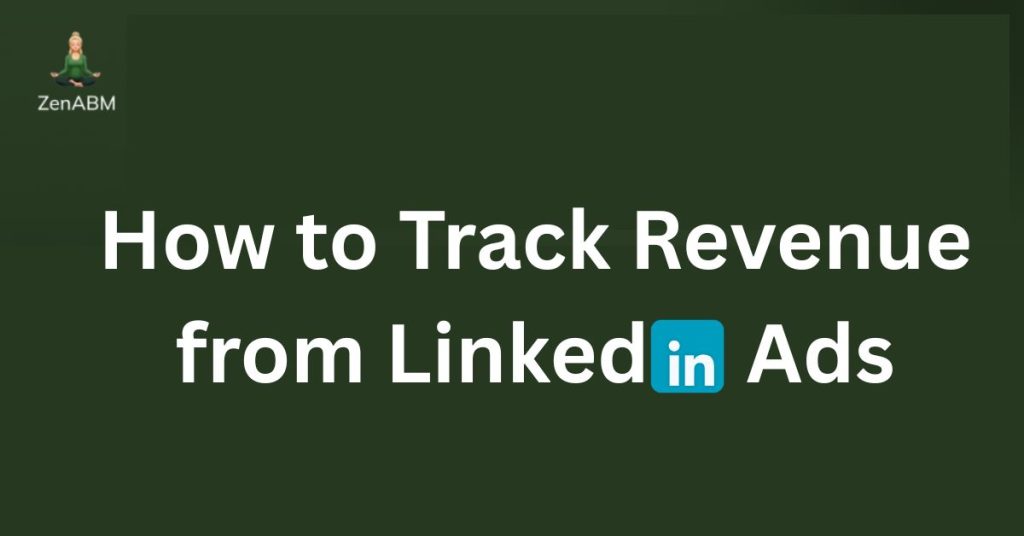Relevance AI is my favorite platform for building AI agents, but this is not a product review. This is the path I took to discover it, and why that same path explains how to track revenue from LinkedIn ads. It also shows why many teams misread what LinkedIn actually does for revenue.
- I kept seeing Relevance AI ads on LinkedIn. They caught my eye. I did not click.
- Later, I watched a full YouTube tutorial about it. Still no click.
- On a quiet Sunday, I searched “Relevance AI” on Google, visited the site, and bought a 20-dollar plan.
Most teams would tag that purchase as SEO. In truth, the ad impressions on LinkedIn nudged the sale. These multi-touch paths are normal. If you only use last click reports or cookie-based attribution in your CRM, you will label the source wrong. You will underfund the campaigns that moved the account.
This is why you need a way to track revenue from LinkedIn ads that captures account-level exposure and influence across campaigns and creatives.
ZenABM exists to solve this problem and much more.
Let me show you how.
How to track revenue from LinkedIn ads: quick summary
If you only have a few minutes, here is the plan:
- LinkedIn works like a digital billboard. Track account exposure and frequency. Do not judge only by clicks.
- ABM needs company-level attribution by campaign and by creative so you can tie touches to pipeline and closed won.
- The LinkedIn Companies tab rolls up data at the account level. It is not granular by campaign, which blocks revenue analysis.
- IP deanonymization is weak for ABM. Real-world accuracy sits near 40 per cent, which breaks revenue mapping.
- Display graphs and third-party cookies miss people and add bots. That skews any ROI view.
- Native CRM syncs focus on people and single sessions. Revenue from multi-user, cross-device paths goes missing.
- Use first-party API data at the company level for impressions, reactions, and clicks. That is the base for revenue attribution.
- Map every LinkedIn engagement to the pipeline. Credit influence across campaigns rather than the last touch.
- Sync company properties into HubSpot. Build lists, reports, routing, and workflows that show revenue impact.
- Score accounts on exposure and engagement. Send hot accounts to BDRs so revenue does not wait.
- Tag campaigns by topic. Reveal buyer intent clusters to guide messaging and offers.
- Use ABM dashboards to track impressions, momentum, opportunity influence, and ROI.
- Stay compliant. Use APIs only. No scraping and no fingerprinting.
- All of this ships in ZenABM. Try ZenABM now for free or book a demo here.
Why conventional methods/tools cannot prove LinkedIn ad revenue in ABM
LinkedIn is a brand and category builder. It rarely acts as a last click engine. CTRs stay low.
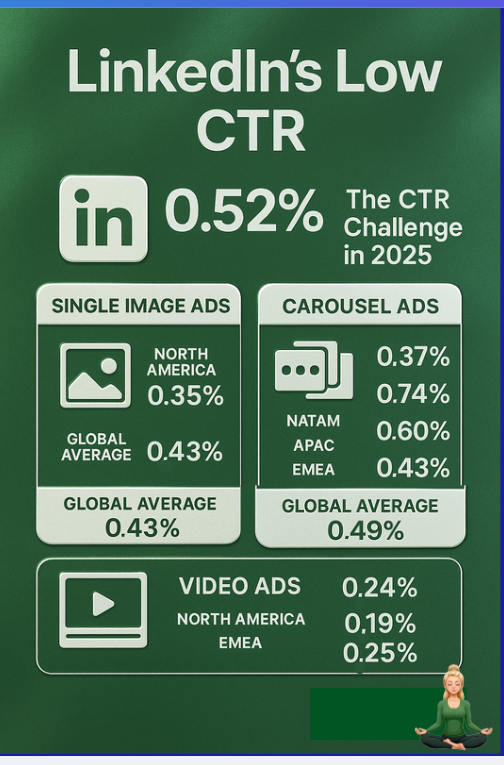
Your ICP is not searching with intent like on Google. They scroll. A VP sees your ad. They do not click. They later search your brand or type your URL and convert. Analytics mark the sale as Organic or Direct. LinkedIn’s real revenue assist never shows up.
The fix: treat impressions and passive engagement as real signals. If you want to track revenue from LinkedIn ads with accuracy, capture who saw what and connect that exposure to account movement. Do this even when no one clicked.
Most stacks cannot do this yet.
LinkedIn Campaign Manager
LinkedIn’s native reporting added the Company Engagement Report, now the Companies tab, to show account-level interactions.
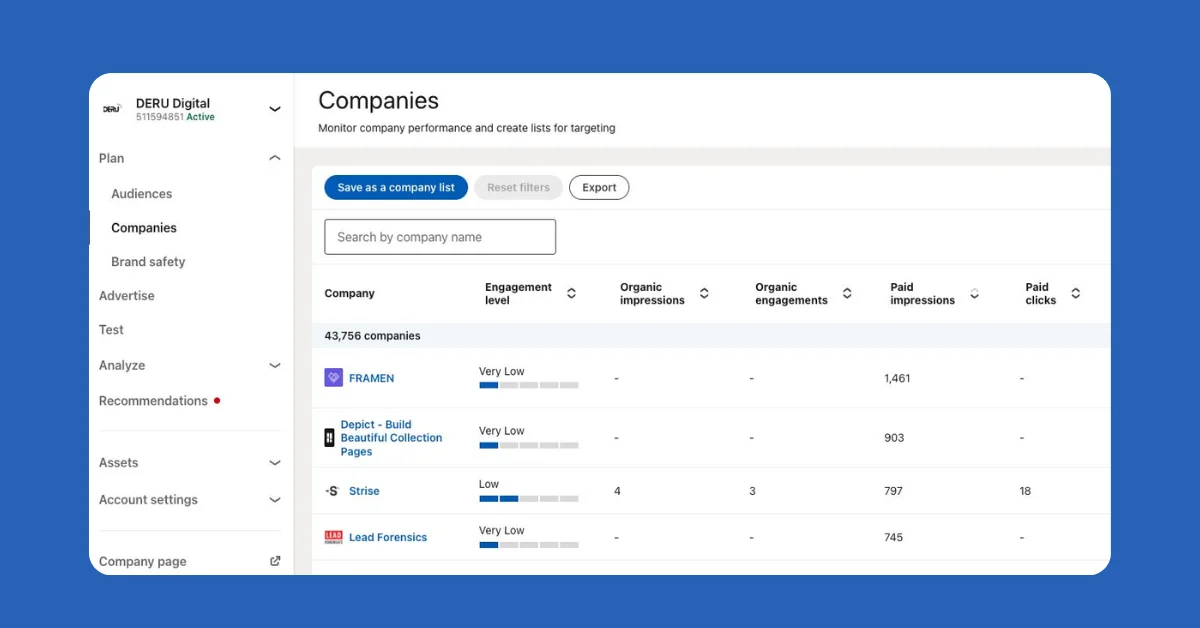
It helps, but it is limited for ABM. The data is aggregated across the ad account. You cannot tell which campaign drove impressions and reactions at Acme or which creative moved the buying group. When you run multiple ABM motions, you need that detail for testing, readiness scoring, and revenue attribution.
Website deanonymization tools
IP matching tools promise to show which companies hit your site. They only see visitors who arrive. That means clickers. Viewers who never clicked your LinkedIn ad stay invisible. Even for clickers, accuracy falls due to VPNs, shared networks, and dynamic IPs.
As this Syft study shows, typical accuracy is near 40 per cent. That is not enough for ABM grade analytics or revenue proof.
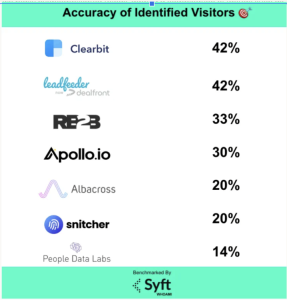

Real world example. Userpilot ran LinkedIn to site analysis through Clearbit and saw one company identified. Their own.
For ABM revenue measurement, this is a non-starter.
Display ad networks and behavioral matching
Retargeting systems such as AdRoll or Criteo infer company or intent with cookies and device graphs. That breaks for ABM.
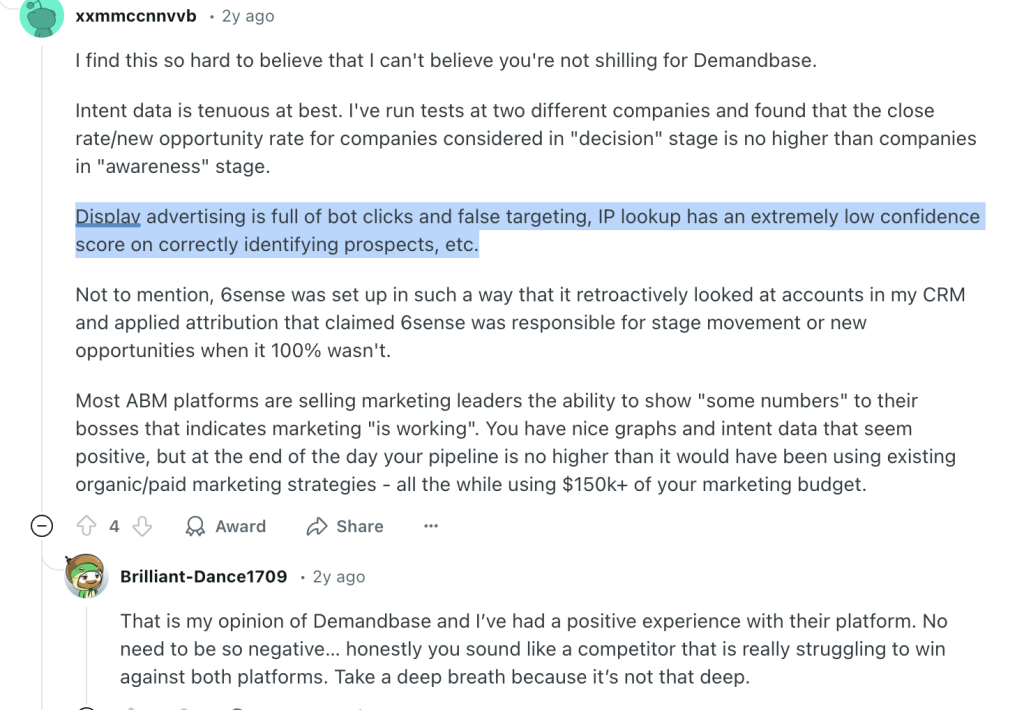
- Third party cookies are going away. Chrome deprecation blocks cross site tracking.
- Stale identity. People change jobs. Old mappings stick and misstate revenue sources.
- Bot inflation. Fake traffic pollutes impressions and clicks, which poisons ROI math.
LinkedIn Ads to CRM integrations
Native integrations like HubSpot sync forms and basic ad data. Useful for ops. Not enough for revenue tracking.
- Built for contact-level attribution. Not for company exposure.
- Misses cross-session and cross-device behavior. Someone views on mobile and converts on desktop next week.
- No clear view of which key accounts keep seeing and reacting to your ads over time.
- No native link from ad engagement to pipeline stages and open opportunities.
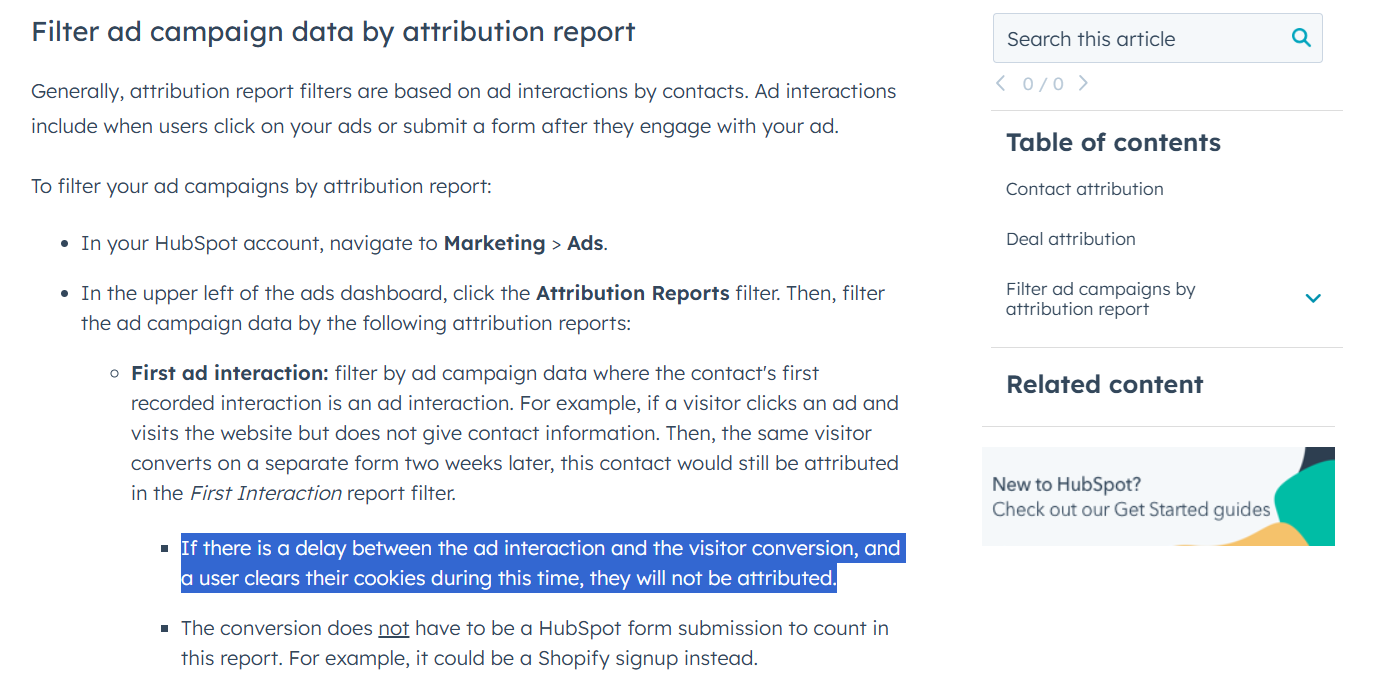
In a buying committee, one person views the ad and another fills the form days later. Last click models and cookie limits drop that link. If you want to track revenue from LinkedIn ads, you need a company-level model, not only a click-through view.
- CRM or Insight Tag. Logs same session clicks to forms. Misses impressions and delayed conversions.
- IP tools. Thin coverage near 40 per cent and only for known sessions.
- Campaign Manager Companies tab. Some company-level impression data exists. Not per campaign or creative. That blocks fair testing and revenue credit.
How ZenABM helps you track revenue from LinkedIn ads
To analyze LinkedIn ads for ABM with precision, you need first-party visibility at both campaign and company levels across impressions, reactions, and clicks. Measure per account. Not just per person. ZenABM delivers this view using LinkedIn’s official APIs. No cookies. No IP matching. No scraping.
See every company that viewed or interacted with the campaign
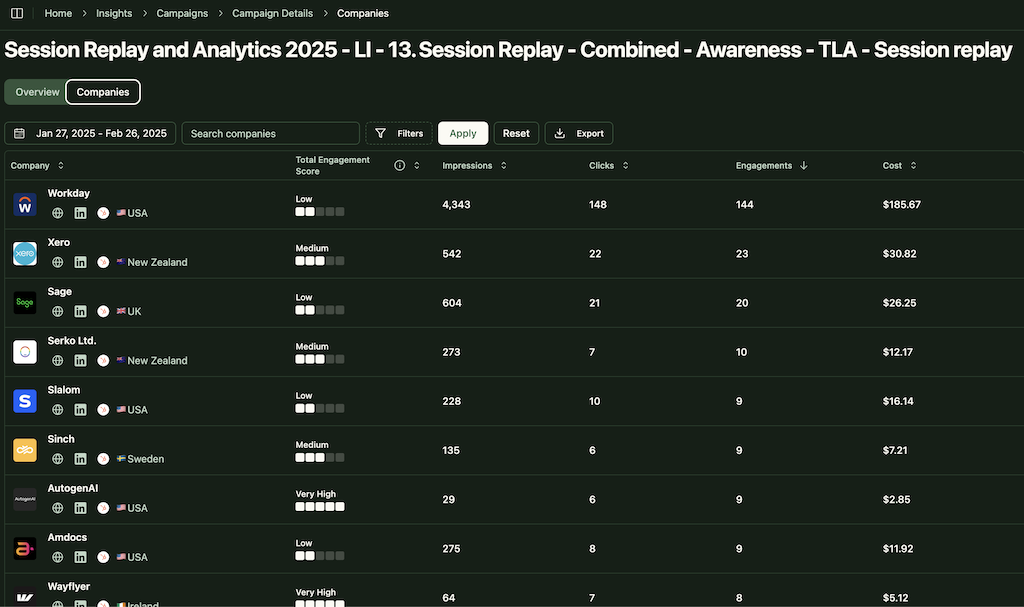
For each campaign, ZenABM surfaces account-level impressions, reactions, shares, and clicks next to CRM deal context.
- Counts impressions even when no one clicks or submits.
- Logs reactions, comments, and shares as valid engagement signals.
- Captures clicks without any browser cookies.
- Tracks view through so non-clicking exposure still gets fair credit.
Example. Company X never clicks. They keep seeing your ads and book a demo a month later. ZenABM links those exposures to the opportunity so the campaign gets a real assist on revenue.
Balanced multi-touch attribution across campaigns
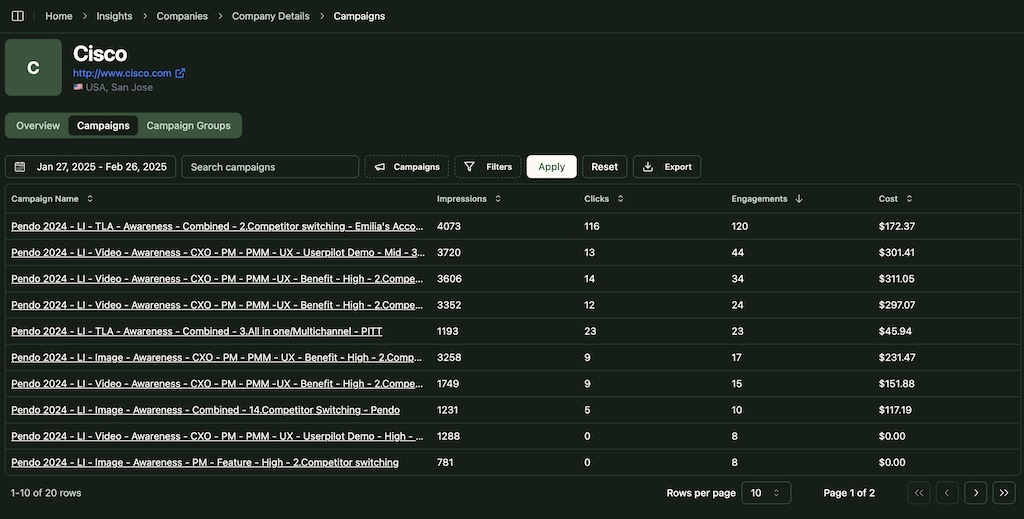
From awareness to education to conversion ads, every touch stays visible. Last click does not take all the credit.
Auto sync engagement into HubSpot and Salesforce at the company level
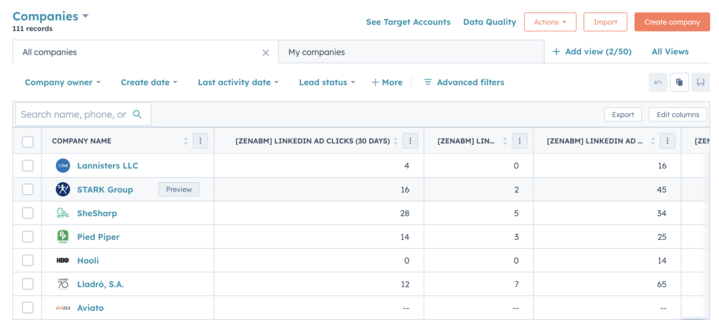
No CSVs required. Company records show properties like Impressions, Last 7 Days and Clicks, Last 7 Days by campaign. Now you can build lists, reports, routing rules, and automations that prove revenue.
ABM stage tracking with thresholds you control
ZenABM tracks the ABM stage of each account using CRM data and engagement levels. You set the thresholds.
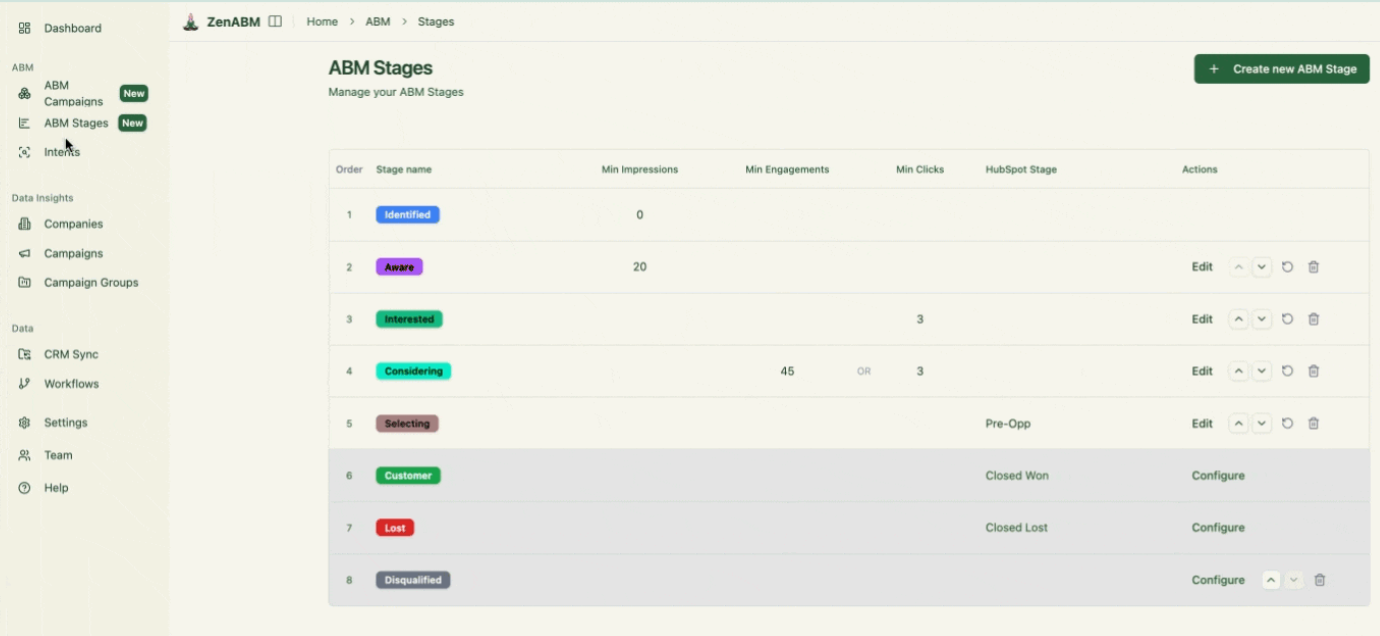
Scoring and BDR routing based on real engagement

Set thresholds on cumulative impressions, reactions, or clicks. When an account heats up ZenABM routes to the right BDR, launches sequences, or starts a one-to-one play.

Intent by topic tied directly to campaigns
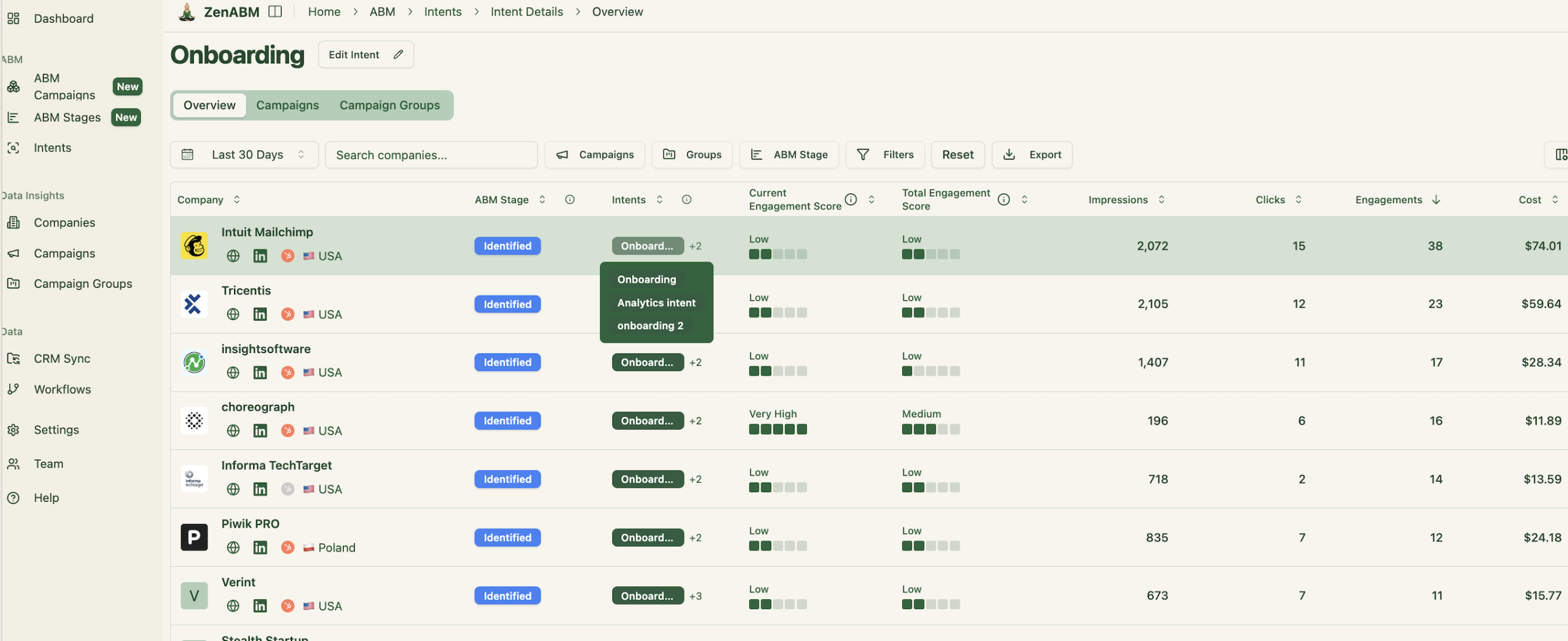
Tag campaigns by use case, feature, or vertical. ZenABM clusters accounts by what they engage with so reps open with the right story and move revenue faster.
Connect ad exposure to pipeline and revenue

See which campaigns influenced opportunities and revenue beyond the last click. This is the attribution view ABM needs to track revenue from LinkedIn ads the right way.
ABM analytics dashboards that are ready to use
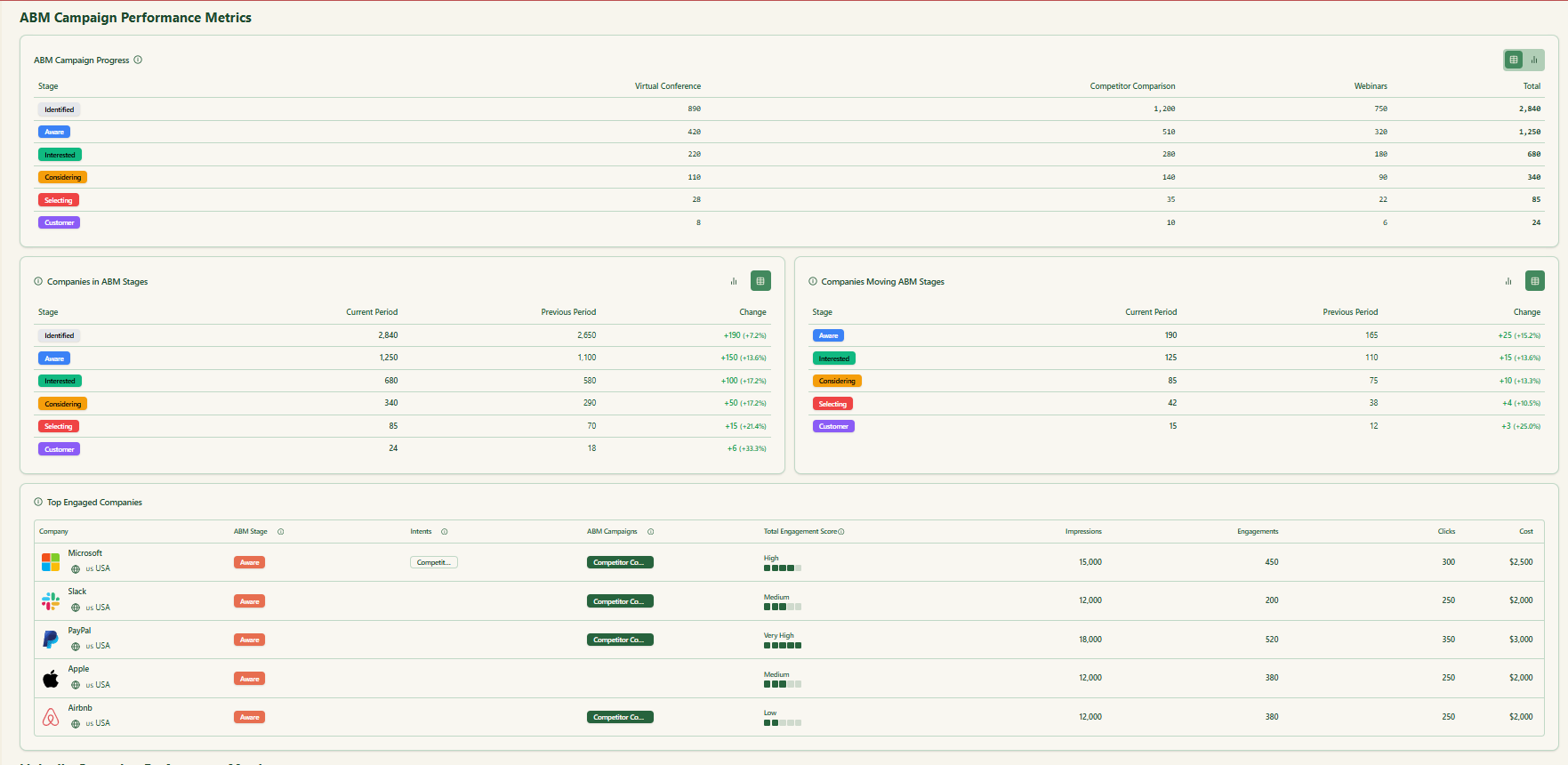

Prebuilt views highlight what matters. Account impressions. Engagement momentum. Opportunity influence. ROI by campaign and by account.
First-party compliant data without scraping
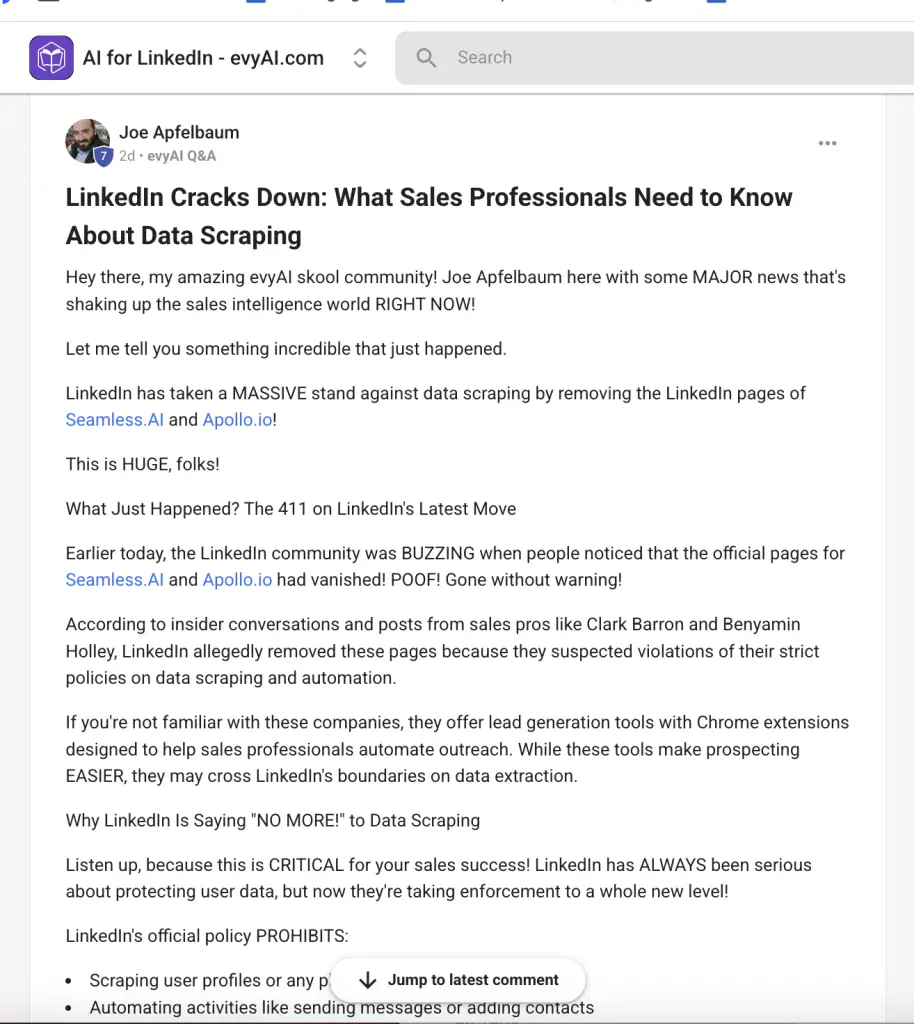
ZenABM uses LinkedIn’s sanctioned APIs. No scraping. No fingerprinting. Clean first-party telemetry that you can trust for revenue reporting.
Over to you
Clicks and forms show one slice of truth. In long multi-stakeholder cycles, the real picture lives at the account level. When you can see who saw which campaigns, how often, and how those exposures moved the pipeline, you can finally track revenue from LinkedIn ads with confidence and optimize spend.
If you want a clean way to track revenue from LinkedIn ads, adopt first-party company-level measurement for impressions, reactions, and cross-campaign influence. Sync that data to CRM for scoring, routing, and revenue reporting. That is what ZenABM delivers. See the view through story you missed and double down on the campaigns that move accounts.

